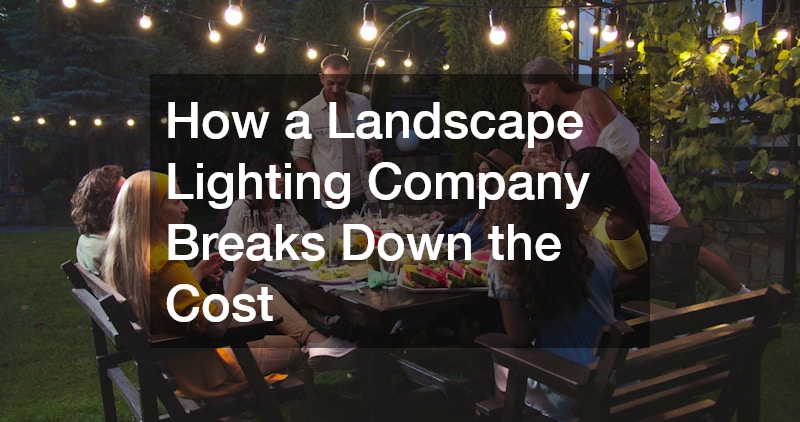
This article explores how a landscape lighting company determines its pricing by breaking down the various factors influencing costs, as well as addressing common questions posed by consumers.
The cost of landscape lighting is influenced by several critical factors, which include the selection of materials. High-quality lights and durable fixtures often come at a premium price, and these costs significantly impact the overall budget for a lighting project.
Video Source
On the other hand, cheaper materials may save money upfront but could lead to greater expenses down the line due to replacements and repairs.
Additionally, the complexity of the design also plays a vital role in determining costs. A simple layout may incur lower costs, while more intricate designs that require specialized lighting fixtures and additional planning will likely raise the total prices. Companies often factor in the artistic vision and aesthetic goals of the client, which can change the cost dynamic considerably.
Moreover, labor costs can vary based on the region and the experience level of the technicians involved. Some companies offer premium services where skilled professionals implement complex lighting schemes, potentially increasing client expenditures. Understanding these variables can help homeowners gauge the cost of their landscape lighting projects more accurately.
The type of lighting selected for landscape illumination significantly influences the overall cost. For instance, LED lights are generally more efficient and longer-lasting, which can lead to reduced operating costs over time. However, the initial investment for LED fixtures can be higher compared to traditional incandescent bulbs, creating a trade-off for consumers.
Furthermore, solar-powered lights have gained popularity due to their energy-saving potential and ease of installation. While these lights may have a higher upfront cost, they can offer long-term savings on electricity bills and require less maintenance overall. Homeowners often need to weigh the pros and cons of each lighting type to see how it fits within their budget.
Another consideration is the technological advancement of lighting options, such as smart lighting systems that allow for customization and automation. These features often come with a price tag that reflects their innovative nature. Understanding the long-term value of different lighting options is crucial for consumers seeking to maximize their investment in landscape lighting.
The installation process is one of the most significant components of the overall cost associated with landscape lighting. Clients can expect to incur expenses related to labor, where rates can vary depending on the complexity of the project and local market pricing. Generally, the more elaborate the installation, the higher the labor costs involved.
Additionally, there may be unforeseen expenses during the installation phase, including the need for additional equipment or changes in the original design plan. For instance, if additional wiring or transformers are required, these would add to the cost. Professional companies often provide transparent estimates but homeowners should be prepared for potential negotiations and adjustments in pricing.
It’s also important to consider the timeline of the installation. Projects that require more time to complete due to weather constraints or logistical challenges might see a rise in costs. Planning ahead and choosing the right season for installation can significantly influence the overall expense of a lighting project.
Once the landscape lighting is installed, ongoing maintenance and operational costs come into play, which are key aspects of the overall investment. Regular upkeep is essential to ensure that the fixtures function optimally and to prolong their lifespan. This could include replacing bulbs or repairing wiring, all of which can incur further expenses.
Moreover, energy costs represent a consistent operational expenditure once the lighting system is in use. Although LED and solar options are more efficient, traditional forms of lighting—such as incandescent—can result in higher electricity bills over time. Homeowners need to factor these ongoing costs into their budgeting plans when considering landscape lighting.
Additionally, with the introduction of smart landscape lighting systems, there may be certain maintenance requirements and subscription services that could increase overall costs. Understanding both the visible and hidden costs associated with lighting maintenance is crucial for consumers aiming to make informed decisions about their lighting investments.
Ultimately, understanding how landscape lighting companies break down costs can help consumers make informed decisions about their lighting projects, ensuring satisfaction and value for their investment.
